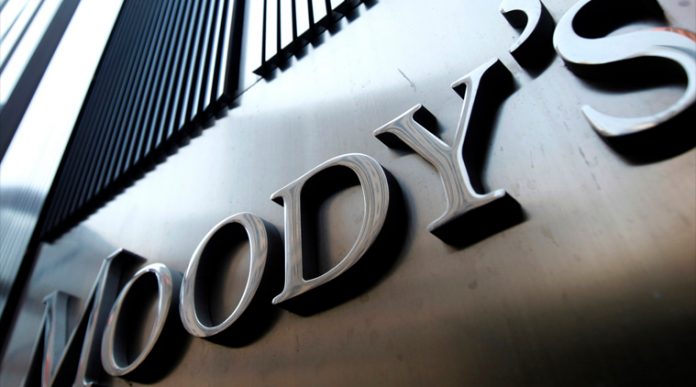LAHORE: Moody’s Investors Service on Wednesday changed the outlook on Pakistan’s rating to B3 negative from B3 stable. In a statement issued on Wednesday, Moody’s said that the decision to change the outlook to negative is driven by heightened external vulnerability risk.
Moody’s noted that Pakistan’s foreign exchange reserves have fallen to record lows and the absence of significant capital inflows suggest that they would not be replenished over the next 12-18 months. “Low reserve adequacy threatens continued access to external financing at moderate costs, in turn potentially raising government liquidity risks,” it added.
Nevertheless, the international rating agency noted that the decision to affirm the B3 rating reflects Pakistan’s robust growth potential which is supported by ongoing improvements in energy supply and physical infrastructure, which are likely to raise economic competitiveness over time. These credit strengths balance Pakistan’s fragile external payments position and very weak government debt affordability owing to low revenue generation capacity.
Concurrently, Moody’s has affirmed the B3 foreign currency senior unsecured ratings for The Second Pakistan Int’l Sukuk Co. Ltd. and The Third Pakistan International Sukuk Co Ltd. “The associated payment obligations are, in our view, direct obligations of the government of Pakistan,” Moody’s added.
Pakistan’s Ba3 local currency bond and deposit ceilings remain unchanged. The B2 foreign currency bond ceiling and the Caa1 foreign currency deposit ceiling are also unchanged. The short-term foreign currency bond and deposit ceilings remain unchanged at Not-Prime. These ceilings act as a cap on the ratings that can be assigned to the obligations of other entities domiciled in the country.
The statement read, “Pakistan’s external account to remain under significant pressure and the coverage by foreign exchange reserves of imports to fall further from already low levels, while coverage of external debt payments due will weaken from currently adequate levels.”
Moreover, Moody’s noted that external vulnerability risks are related to Pakistan’s sizeable current account deficit, which Moody’s expect will only narrow slightly to around 4-4.3 per cent of GDP over the next few years, after an expected 4.6 per cent in fiscal 2018 (FY2018, fiscal year ending June 2018) and compared to an average deficit of around 1.5 per cent between FY2014 and FY2016.
As a result, unless capital inflows increase significantly, Moody’s does not expect official foreign exchange reserves to replenish from their current low levels.
However, it highlighted that Pakistan’s relatively strong growth potential, enhanced by investment that strengthens and stabilizes power supply, provides the economy with some capacity to absorb external or domestic shocks. Notwithstanding a moderate slowdown in near-term economic activity induced by policy tightening, Moody’s expects GDP growth in Pakistan to remain robust, above 5 per cent, the statement added. Moody’s also highlighted the importance of CPEC-related investments over FY2019 and FY2020 to boost the economy.
Meanwhile, in an attempt to soften the blow, Ministry of Finance (MoF) in a statement issued as a response to Moody’s decision said, “Moody’s has reaffirmed Pakistan’s local and foreign currency long-term issuer and unsecured debt ratings as B3. While reaffirming the credit rating, Moody’s has appreciated Pakistan’s robust growth potential, supported by ongoing improvements in energy supply and infrastructure which have the potential to raise economic competitiveness over time. The outlook has, however, been changed to Negative on account of factors which may impact the external account situation.”
However, the statement highlighted that the government is fully aware of the challenges facing its external account and short to medium term remedial measures are already being put in place.
To curtail aggregate demand, the interest rate has been enhanced by 75 basis points since January 2018. The added exchange rate flexibility is expected to contribute towards containing the current account deficit. As exports pick up, 13.3 per cent increase during July-April and CPEC related imports peak out, the current account deficit is expected to peak this year and decline in the coming years. Foreign Direct Investment (FDI) and remittances have also rebounded with an increase of 2.5 per cent and 3.9 per cent respectively during the current financial year.
It highlighted that the government has also successfully decelerated the import bill through the imposition of regulatory duties on non-essential and luxury items. Following clearance from the Supreme Court of Pakistan, the recently announced Amnesty Scheme is also expected to bring additional inflows.
The statement reassured that Pakistan has sufficient foreign exchange reserves to meet its obligations on account of external debt repayments and that the government is, therefore, confident of the outlook on its external account.
























Please put me on your email subscriptions for headlines and news alerts.